Elsewhere in the Arab world, meanwhile, the last vestiges of European political dominance were being eliminated. Egypt, for example, after ousting in 1952 a royal dynasty going back to the 1800s and installing Gamal Abdel Nasser as president, forced the British to relinquish control of the Suez Canal and withdraw from the country. Algeria, ten years later, won its independence from France after six years of bitter warfare. Even earlier, Iraq, Syria, and Lebanon had broken their ties with Britain and France.
This tumultuous period also saw an increase in the influence of the United States and the Soviet Union in the Middle East. Neither power had played a major role in the early phases of penetration, but this changed as they developed conflicting interests with regard to the Arab-Israeli dispute, the construction of the Aswan Dam in Egypt, the rise of a number of radical governments in the area, and the emergence of the Arab world as a pivotal supplier of oil to the world.
In the same period, the Arab countries themselves, voluntarily and pragmatically, continued to adopt Western techniques, forms, and to some extent concepts. Most Arab countries, for example, have embraced the concept of the sovereign nation-state and Western patterns of political administration: parliaments, political parties, and constitutions. Many, too, have adopted Western legal codes, have accepted international and regional organizations and international courts as means of dealing with other nations, and have organized and equipped their armed forces along Western lines. In recent years, most Arab countries have also adopted the modern industrial economy as a national goal and introduced modern techniques of agriculture and modern methods of transport and mass communications, and invested vast sums in education. Even in recreation and amusement, Western influences are strong.
If Western influences are important in the Middle East, however, they are by no means paramount. Western forms have been adapted as much as they have been adopted, and healthy hybrid forms and concepts abound. More importantly, traditional values are still deeply cherished and promoted. In sum, modernization has not been entirely synonymous with Westernization. By the end of the 1970s the Arabs, having assumed control of their own destinies, had emerged as full and independent participants in the affairs of the world. In the forefront was Saudi Arabia, the heartland of Islam, and the site of the momentous events which initiated Islamic history fourteen centuries ago.
In the sixteenth century three Muslim empires are at or close to the pinnacle of their power and brilliance: the Ottomans under Suleiman the Magnificent, Safavid Persia under Shah Abbas the Great, and Mogul India under Akbar the Great. The Ottoman Turks have conquered and maintain effective control over diverse peoples in a vast empire stretching from Persia almost to the gates of Vienna and along the north coast of Africa to Algiers. In the Arabian Peninsula the Ottomans penetrate to al-Hasa on the Arabian Gulf and to Mocha on the Red Sea. However, the sharifs of Mecca and Medina are virtually independent. Throughout this period the Ottomans contest control of the Arabian Gulf and the Red Sea with the Portuguese, who establish themselves in Bahrain, Muscat, and Hormuz and assist Ethiopia in repulsing the Turks from the coast of East Africa.
Islam numbers many millions of adherents outside the Middle Eastern countries:
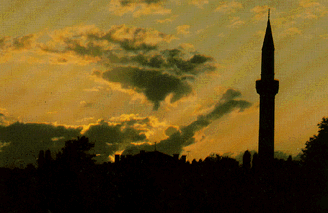
Photo: Sunset silhouettes a minaret in Sarajevo, a city of some eighty mosques that bear witness to the long Islamic heritage of Bosnia and Herzegovina.
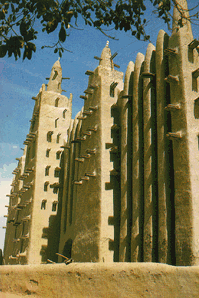
Photo: The Mopti Mosque in the West African Republic of Mali.
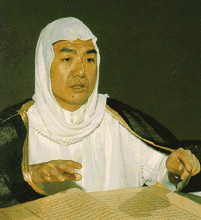
Photo: A Taiwanese religious teacher.
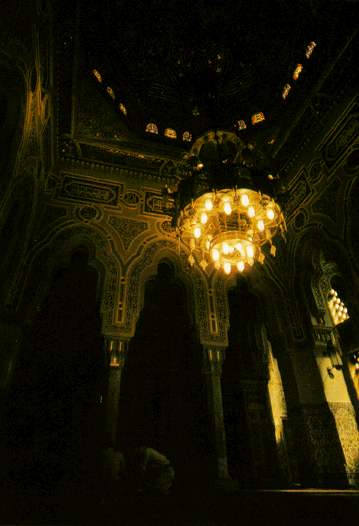
Photo: A mosque in Washington, D.C., a landmark for millions of Muslims in North America
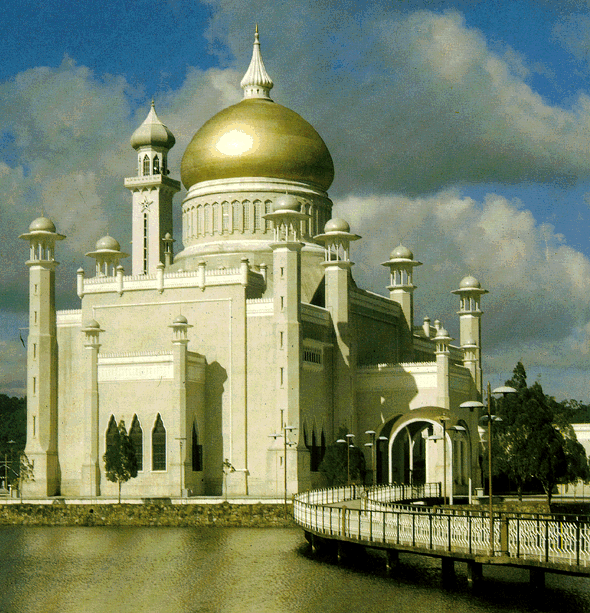
Photo: One of the largest mosques of the Far East is in Bandar Seri Bagawan, capital of the Sultanate of Brunei in Southeast Asia.